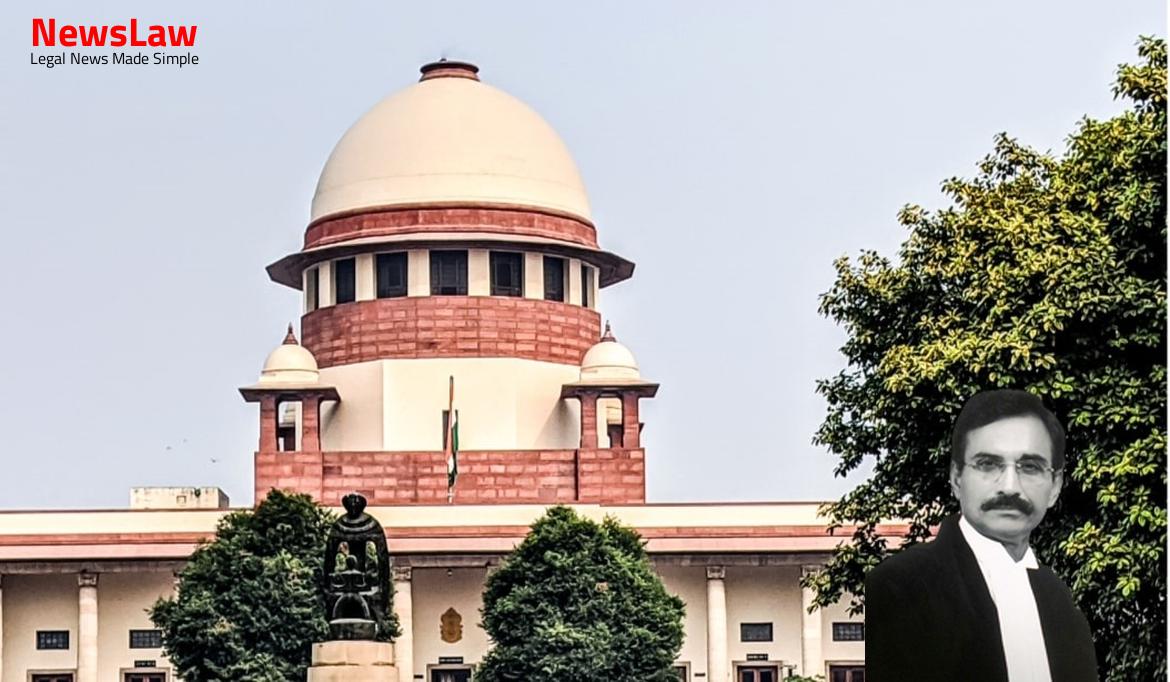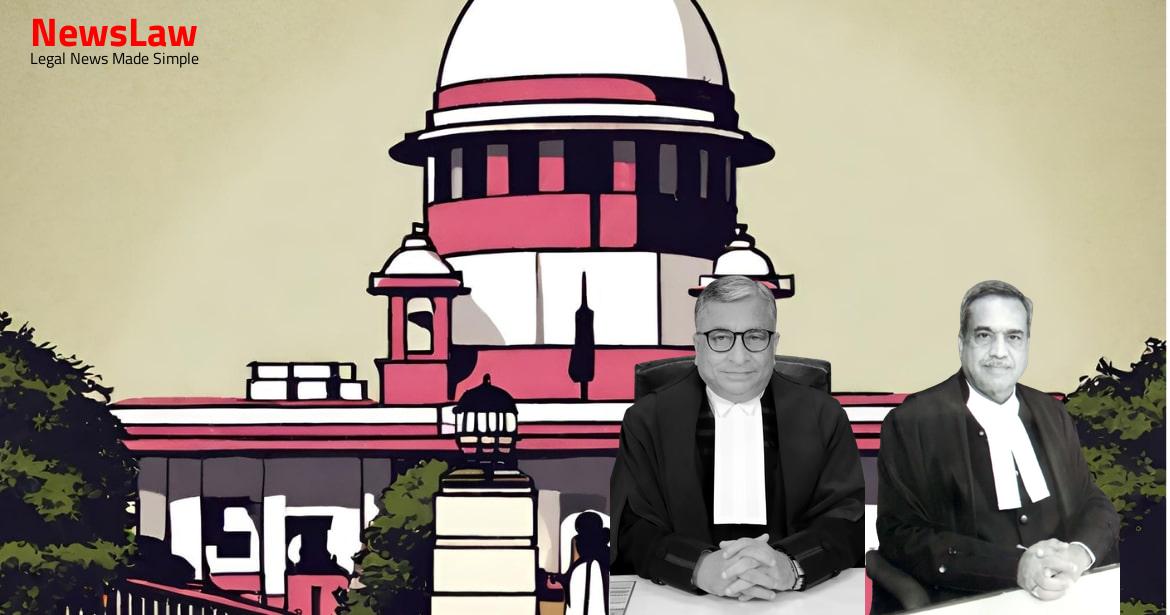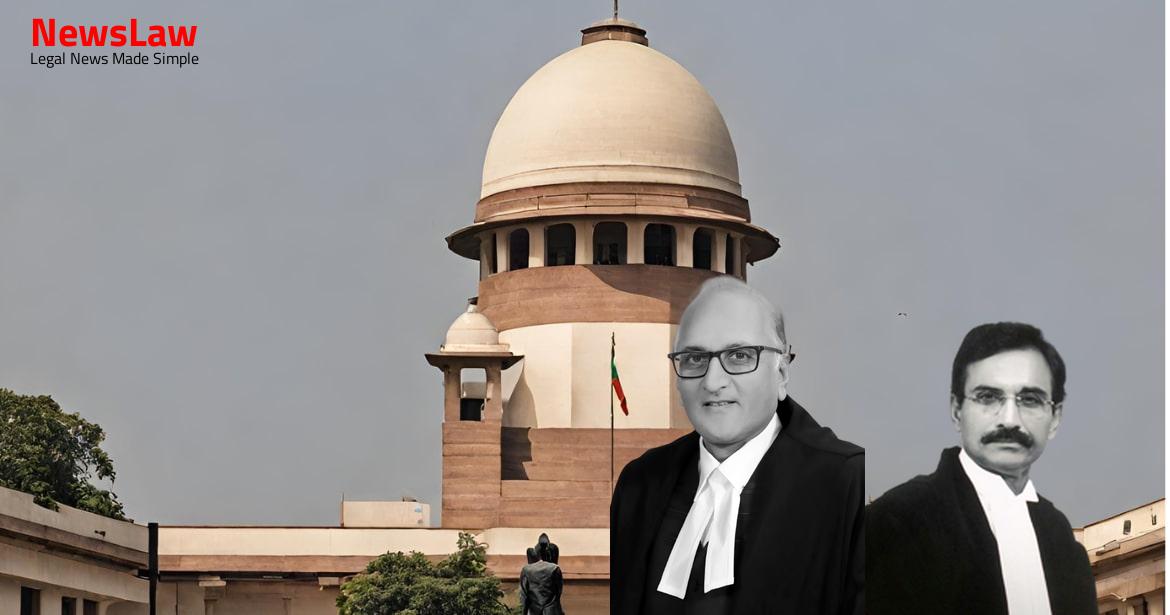In a significant legal battle, the court delves into the principles of equality before the law and fair treatment in a plot allocation case involving former employees. The focus is on the court’s thorough legal analysis of Article 14 of the Constitution, highlighting the importance of consistent and unbiased treatment for all parties involved. Let’s explore the nuances of this case and the court’s rulings that shape the landscape of legal equality.
Facts
- The NTC and KUDA filed Writ Appeals before the Division Bench challenging the judgment of the learned Single Judge.
- The Division Bench allowed the Writ Appeals and set aside the Single Judge’s order.
- The Single Judge had directed the respondents to allot 200 Sq. Yard house sites to 318 eligible members of the Workers Association, similar to other ex-employees.
- The Division Bench’s decision aggrieved the Workers Association, leading them to file the present Appeals.
- The Appeals stem from a dispute regarding the allocation of house sites to former employees of Azam Jahi Mills.
- Around 452 employees worked in the Mill for over 20 years.
- Portion of Mill’s land sold to Housing Board, KUDA, and other institutions.
- All workers were allotted Employees’ Quarters owned by the Mill during their service.
- Voluntary retirement taken by all employees under the Modified Voluntary Scheme of 2002.
- Report by VRO of Laxmipura indicated vacant land available for house plot allocation to 318 employees.
- No action taken to allocate developed plots to the remaining 318 ex-employees who also took voluntary retirement.
- High Court Writ Petition filed by Workers Association for plot allocation.
- Closure of the Mill in 2002 after voluntary retirements and eviction of employees from quarters.
- NTC selling machinery and infrastructure then selling part of the land to KUDA.
- Demolition of quarters by Mill management post-eviction, with some employees still occupying despite notice.
- NTC/Mill owning 11 remaining Acres of land after closure.
- Initiation of proceedings by Ministry of Labour post closure application by Mill.
- KUDA proposing house sites to 134 employees who remained in quarters despite eviction notice.
- Representation made by 318 retired workers along with the other 134 for plot allotment.
- Government accepting KUDA’s proposal to allot 200 Sq. Yards developed plots to 134 ex-employees.
- Direction by Revenue Divisional Officer to inquire about land for plot allocation.
- State Government accepting KUDA’s proposal for plot allotment as a welfare measure.
- Request during hearing for quarters allotment to workmen at reasonable rates.
Also Read: Legal Analysis on Conviction Based on Sole Testimony of Prosecutrix
Issue
- 318 ex-employees of the erstwhile respondent No.4 Mills sought equality and the same benefits as 134 other ex-employees who were allotted 200 Sq. Yards of plots free of cost.
- All 318 and 134 ex-employees were similarly situated as they worked for respondent No.4, resided in allotted quarters, took voluntary retirement under the same scheme in 2002, and were relieved on the same date.
- 318 ex-employees vacated their quarters as per a notice in 1986, while 134 ex-employees continued to retain their quarters even after being relieved from service in 2002.
Also Read: Legal Analysis on Concurrent Sentences in Drug Trafficking Cases
Arguments
- It is argued that the remaining 318 workmen vacated the quarters pursuant to a notice, while 134 did not, creating unequal treatment.
- The Workers Association claims that the Division Bench erred in quashing the Single Judge’s judgment and dismissing the writ petition.
- The KUDA asserts that a writ of mandamus cannot be issued directly to allocate land as it’s private, not government-owned.
- KUDA is a statutory authority for development in Telangana and can only use assets as per statutory objectives.
- The allotment of land to the 134 workers was due to hindrances posed by their occupation, not legal recognition.
- The Workers Association claims rights under G.O. No.463 of 2007.
- A writ of mandamus is applicable when there’s a legal right and duty against the party, citing relevant court cases.
- KUDA had no contractual duty with the ex-employees for free plot allotment.
- The purpose was rehabilitation, not part of the retirement scheme.
- The 318 employees not in possession were not treated equally with those in the quarters.
- The land was crucial for urban development, necessitating prompt resolution with the occupied workers.
- The different treatment for 134 workers was to hasten development.
- The land was owned by the Central Government post-nationalization, affecting obligations.
- No legal relationship obligating KUDA to allot land free of cost to the workers.
- The argument of unfair discrimination and obligation of the State instrumentalities for fair treatment.
- The Workers Association representing 318 ex-employees of a Mill filed a writ petition seeking 200 Sq. Yards of plots free of cost, similar to 134 other employees.
- Both classes of employees had taken voluntary retirement under the same scheme and were similarly situated, except for vacating quarters in compliance with a notice.
- 134 employees were allotted plots free of cost as a welfare measure, leading to a writ petition by the remaining 318 employees for parity.
- The Single Judge granted the petition, citing discrimination under Article 14 of the Constitution.
- The Division Bench of the High Court overturned the decision, leading to the current appeals.
- The key question is whether the remaining 318 employees can claim equality with the 134 employees in plot allotment.
- Central Government/NTC/Mills were not involved in the decision by KUDA for plot allotment.
- All employees opting for voluntary retirement were aware of benefits, which did not include free plot allotment.
Also Read: Legal Jurisdiction and Award Finality in Arbitration Dispute
Analysis
- 318 ex-employees who voluntarily retired under modified VRS 2002 requested for 200 Sq. Yards of house plots similar to 134 ex-employees who were already allotted the plots.
- The court found that treating the two groups differently violated Article 14 of the Constitution, as the equals were being treated unequally.
- The respondents argued lack of land and financial constraints for not allotting plots to the 318 ex-employees, but the court disagreed, emphasizing the need for equal treatment.
- The court criticized the respondents for changing their stance and trying to improve their case by offering plots free of cost only to the 134 ex-employees.
- It was noted that the proposal to allot plots to the 134 ex-employees did not mention avoiding litigation costs, calling into question the new rationale presented by the respondents.
- The court highlighted the concept of equality before the law and equal protection of the laws under Article 14, stating that similar benefits should be extended to all retired employees in this case.
- The court concluded that the members of the petitioner association were entitled to equal treatment and should not be disadvantaged for vacating quarters lawfully.
- The respondents’ argument regarding the illegality of the occupation by 134 ex-employees was refuted, emphasizing the rehabilitation and welfare aspect of the plot allocation.
- Overall, the court emphasized the importance of equal treatment and criticized the respondents for changing their stance during the case.
- It cannot be presumed that all 318 ex-employees who vacated quarters and stayed elsewhere were settled.
- There may be ex-employees compelled to vacate quarters who have not settled or may be staying in a one-room house.
- Allotting 200 Sq. Yards of plots to 134 ex-employees to avoid undue hardship and as a welfare measure would be discriminatory and violative of Article 14 of the Constitution.
- Giving plots to those in unauthorized occupation as a way to avoid litigation would be a premium to lawbreakers and punish those who vacated pursuant to notice.
- Justifying differentiation between two classes of ex-employees is not relevant.
- There is no justification to deny allotment of plots free of cost to the remaining 318 ex-employees when 134 were given plots in similar circumstances.
Decision
- Impugned judgment and order dated 19.02.2020 passed by the High Court for the State of Telangana in Writ Appeal Nos.427 of 2016 and 431 of 2016 are quashed.
- Judgment and order passed by the learned Single Judge in Writ Petition No.26642 of 2007 is restored.
- Respondent Nos.2 and 3 are directed to treat and consider the remaining 318 ex-employees of the erstwhile respondent No.4 – Azam Jahi Mills at par with other 134 ex-employees who were allotted 200 Sq. Yards of plots free of cost.
- Respondent Nos.2 and 3 may approach respondent No.1 and/or the State Government for allotment of additional land or to allot plots from the remaining land of respondent No.4 Mills.
- KUDA is allowed to approach the State Government and/or the Central Government to allot additional plot/land from the remaining land available with the Central Government/National Textile Corporation Limited of the erstwhile respondent No.4 Mills.
- Allotment of plots to the remaining 318 ex-employees within six months from today.
- No order as to costs in the present Appeals.
Case Title: MODIFIED VOLUNTARY RETIREMENT SCHEME OF 2002 OF AZAM JAHI MILL WORKERS ASSOCIATION Vs. NATIONAL TEXTILE CORPORATION LIMITED (2021 INSC 677)
Case Number: C.A. No.-006260-006261 / 2021



